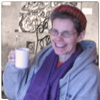Reconnaissance Mission, 1917 (The Gilbert S. Dey Archive)
 7.13.13 Brendan flew to Rochester on a cloudless June day and was able to gaze from his window at the patchwork of farms, streambeds, woods and roadways. He couldn't believe that some people pulled their window shades down, uninterested in the beauty below. I remember my own awe at the sight. Seen from an airplane, the world takes on new form, new meaning that is missing at ground level.
7.13.13 Brendan flew to Rochester on a cloudless June day and was able to gaze from his window at the patchwork of farms, streambeds, woods and roadways. He couldn't believe that some people pulled their window shades down, uninterested in the beauty below. I remember my own awe at the sight. Seen from an airplane, the world takes on new form, new meaning that is missing at ground level.
Ten days later I gave Brendan a couple boxes of material that were a mystery to me: something to do with a guy named Gilbert Dey and "aviation." The mission: "Tell me a story."
At first glance -- street view -- the boxes contained a bunch of business papers and curled black-and-white photographs. The folios of carbon copies of correspondence and reports dated back to late 1910s. Gilbert Dey worked for Kodak. On his passport application he lists his occupation as Superintendent of Manufacturing. He went to Europe and wrote a lot about glass.
To understand what was going on and the importance of Gilbert Dey's assignment, you have to get out of the technical weeds and pull back for a bird's-eye view.
On the surface of it, Dey was heading to England, France and Switzerland on a routine business trip. But there was nothing routine in the Europe of August 2, 1916, the date on Dey's passport application. Since July of 1914, the Great War --World War I -- had been ripping a great wound in the European landscape. England and France were being thrashed by the Germans, who had apparently perfected the tactical elements of trench warfare. The month before, on July 1, 1916, the British Army suffered 57,470 casualties, including 19,240 dead on the first day of the Battle of the Somme. This is what Dey was walking into.
Paging through the Dey archive, it becomes clear that Kodak was getting involved with the critical mission of aerial reconnaissance and the cameras that would accomplish it, even though America was a year away from joining the combat on the Western Front.
The archive clues us in that Dey wound up working with the US Military on this mission.
Of course, pilots flying reconnaissance can see the ground and report back to their commanders. But a photograph allows experts to interpret and evaluate a scene for trenches, barbed wire, munitions dumps, and other details that would provide a tactical advantage. If the plates in the camera can be switched out fast enough, military intelligence can put together "stereo pairs" -- an invaluable hyperstereo, 3D picture of the landscape.

The specs of the camera were important, but what about the plane's vibration? The blueprints and photos above show that Dey was also involved in testing mounts that would hold the camera steady despite the rattling of flight. Design after design had to be prototyped and tested in the air.
Today we are astonished at the NASA photos of the Blue Marble, our planet Earth, and we are amazed to gaze into our neighborhoods with Google satellite images. The real breakthroughs in aerial photography came after Gilbert Dey's time and Dey remains anonymous -- not a pioneer, not an unsung hero, just a guy taking care of business, making sure the job got done, writing reports to his boss. His importance is in reminding us that the early days of technological innovations are not very glamorous. Trial and error. Mostly failures. Painstaking documentation. And handing off your work to the next generation. Next time I check out Google maps, I will think of Gilbert S. Dey.


